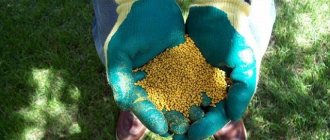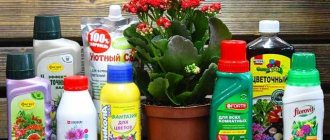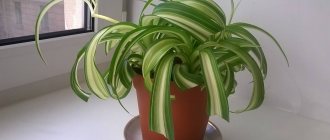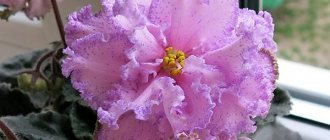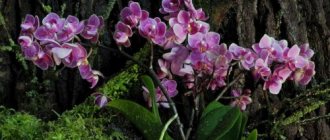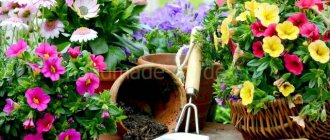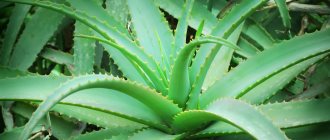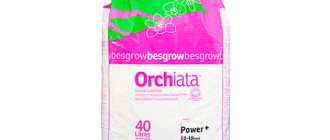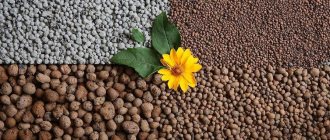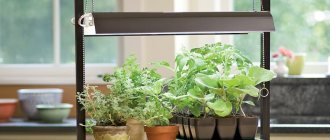Content
- 1. Soil characteristics
- 2. Soil composition 2.1. High peat
- 2.2. Lowland peat
- 2.3. Vermicompost
- 2.4. Sod land
Finding the perfect soil for your favorite indoor flora is like searching for the mystical “Holy Grail” that will instantly make the plant bloom in a lush bouquet.
In reality, the search and selection stories are more similar to fishing ones: if your neighbor is biting (read: grows/blooms better), then his worm (soil) is better. However, the truth is often not buried in the soil, although it is one of the four pillars of proper plant growing, along with lighting, watering and care. What soil is the best? The answer to this question depends on what plant you have on your windowsill. The best soil for an azalea is the worst soil for a desert cactus. Both will be completely unsuitable for aquatic plants. And some plants do not need soil at all (for example, epiphytic orchids or the aerophyte Tillandsia osniformes). However, if we don’t touch exotics, then almost all soils have characteristics that unite them, knowledge of which will help you find the right soil among similar ones specifically for your plant.
Vermiculite
Vermiculite “Flower Happiness”, 2.5 liters
This is our favorite additive for making the soil very light and permeable. Not a single peat, if vermiculite is added to it, will become impermeable.
Vermiculite is a unique natural and environmentally friendly material
.
It is light and sterile
.
Its use is very wide: most often it is an additive for soil mixtures, which maintains an optimal comfortable water-air regime in the process of growing almost all types of indoor plants . Protects the root system from external temperature changes and prevents soil acidification
.
Add to all plants, and especially to those who love light soils! The soil does not cake with it at all.
Moss and activated carbon are also useful (it is responsible for absorbing harmful organic substances, keeping the soil fresh and preventing the appearance of mold and mildew). The soil with it is less prone to salinization. Vermiculite contains calcium, magnesium, potassium, aluminum, iron, and silicon. Can also be used to fill the top layer.
And also - it is eternal ! Vermiculite can remain in the soil for 10 years, but even after this period it can be reused: rinse, calcine, and you're done!
Soil characteristics
In order not to make a mistake with the choice of soil, you need to know its main characteristics and correlate them with the requirements of a particular type of substrate.
The main characteristics of the soil include:
- porosity and looseness of the soil, which determine air penetration (soil aeration);
- ability to pass moisture (moisture permeability);
- ability to retain moisture (moisture capacity);
- nutrient conductivity;
- acidity level - pH. If Gloxinia, Hydrangea, Dieffenbachia require a slightly acidic environment (pH 6.0–6.5), then Rose, Cineraria, Chrysanthemum require a neutral environment (pH 6.5–7.0), and a slightly alkaline environment is suitable for Adenium and Narcissus. As a rule, the pH is indicated on the soil package.
IN THE PHOTO: Air- and moisture-permeable soil for growing seedlings
Features of potted culture.
In potted culture conditions, the substrate must absorb and retain water well. Garden soil does not always meet these requirements. However, one more important nuance must be taken into account. Plant roots are involved in respiration. Therefore, the soil in the pot should dry out approximately evenly both above and in the depths of the container. And another feature of potted culture is the leaching of minerals necessary for nutrition. To be more precise, beneficial salts are gradually replaced by harmful ones, and acidity (pH level) also changes. After all, the soil in the pot inevitably leaches, even if you use soft water. Therefore, in pot culture conditions, there is a need to periodically replace the used substrate with fresh soil.
Soil composition
To make the right choice, you should pay attention to the composition of the soil mixture. It determines how often watering, replanting, fertilizing and their quantity are required.
High peat
High-moor peat (a product of the decomposition of sphagnum growing in raised bogs) is part of most soils. It is widely used in its pure form for cultivation both in private, indoor culture and in agriculture. High-moor peat is characterized by high moisture capacity, breathability and lightness. It is these properties that made it a leader among other primers. An additional “bonus” for residents of regions with hard water in the water supply is the acidic environment of peat. It moderately neutralizes salts when watering, although this effect is short-lived.
Indoor plants are rarely grown on pure peat, because it is extremely poor in nutrients. In addition, unwatered peat has difficulty absorbing moisture. Those who use soils based on high-moor peat know what a headache watering such a substrate becomes. The pot with overdried soil should be placed in a basin of water and wait until the peat has collected the required amount of moisture.
Lowland peat
Lowland peat (obtained from low-lying bogs, wetlands) is rich in nutrients. That is why it is used mixed with high-moor peat as part of the most popular soils for indoor plants. In its pure form, lowland peat is not used at all: due to its fine structure, it is quite “heavy”, quickly cakes, retains water and has low air permeability. This factor can play a cruel joke, for example, with aroids, the roots of which are easily damaged due to stagnation of water.
Vermicompost
Vermicompost – also known as simply “humus” – is very popular both as an additive to soil mixtures and as a separate substrate (usually in garden farms). It is surrounded by a lot of myths and bears the title of “super soil for all plants.” In fact, the “bio” prefix was added by marketers, and humus itself is nothing more than rotted plant residues that make up the top nutrient layer of the soil.
It is very good if the store-bought soil contains humus from a region with nutrient-rich soils (such a “region” could be former agricultural land, a state farm, or a “cow barn”). But most often it’s a “pig in a poke.”
Even good, nutritious humus in its pure form has certain disadvantages: it has low air permeability (not immediately, but as it cakes) and high moisture capacity. Plants grown in a substrate on “vermicompost” need to be watered less frequently, and the top layer needs to be loosened more often.
Sod land
Similar to “vermicompost”, the glory of turf soil is popular among people. Sod is the root-inhabited part of the soil. As with humus, turf soil can be different, which means it is impossible to talk about a single quality standard for such soil. Its quality depends on the specific location: if on the territory of abandoned collective farms/state farms the turf soil is good, then in the field it is not so good. The main disadvantage of turf soil is the need to remove residues of other plants, followed by steaming to remove possible microorganisms.
For independent experiments, it is better to use soil from garden farms where fruit trees are cultivated. “Coniferous soil” is very popular - it is light, aerated, has a slightly acidic reaction and is in many ways similar to peat, although it does not dry out so much that you have to soak the pot with the plant for hours. Almost any sod-leaf soil is relatively poor in nutrients (or slowly releases them).
IN THE PHOTO: Peat tablets
Green soap
Plant protection product “Gardener. Green soap. Inta-vir", 250 g.
A universal, safe biological product for protecting plants from diseases and pests. Has a number of advantages:
— a universal product for all types of plants; — obtained from natural fats and vegetable oils; — recommended by professional gardeners; - environmentally friendly product.
Ingredients: water, potassium salts of fatty acids, natural fats and vegetable oils.
What to do with him?
Add to a spray bottle when you spray plants with additives to protect against diseases and parasites, and this product is also very suitable for regular showers: wash the leaves of plants with this soap, and there is no need to rinse. The product safely and constantly protects plants from pests.
Additional components in the soil composition
Auxiliary substances in the soil mixture are like lifesavers for amateurs and professionals. Some improve soil looseness, others increase moisture permeability, and others protect against excessive moisture.
Below we will touch only on the most popular ones:
Vermiculite is a natural mineral that holds water well (up to 200-300% of its own weight) and slowly releases it along with dissolved minerals. It is used as a component of soils for hydroponic growing of plants, for growing seedlings, and in its pure form for rooting cuttings of Peonies, Roses, Chrysanthemums, Aloe.
Perlite is nothing more than volcanic glass, which becomes light and porous during heat treatment. It is used by almost all greenhouse growers and therefore often frightens buyers who think that these are insect eggs or part of the mythical “transport soil”. Perlite gives the soil greater looseness and breathability. It is added to substrates and used in its pure form for growing seedlings.
Coconut fiber, coco soil or coconut shavings (or chips) are all products of processing the fruits of the coconut palm. The fiber is the long “strands” of the coconut shell. Coco soil can consist of fine shavings and so-called “chips” - parts of a larger fraction. Both are a product of processing the middle shell of a coconut.
The large fraction is more often used by terrariumists to create bedding for amphibians. The fine fraction received the general name “cocosoil” and began to enjoy enormous popularity primarily in the West. Coco soil is worthy of a separate publication, but here we will add that it is an ideal component for creating loose, moderately moisture-absorbing soil for almost any non-aquatic plant. Pure coco soil is used in hydroponics because... does not contain nutrients and allows you to create individual nutrition. Coconut fiber is used for growing orchids, ferns, bromeliads, and succulents.
River sand, which increases moisture permeability and prevents caking of the substrate, is widely used for palm trees, cacti and succulents. For bulbous plants, sand can be a kind of “cushion” that protects the bulb from excessive moisture. However, you should be wary of sand accumulation in the ground, because... when moistened, it does not allow oxygen to pass through easily.
Sphagnum moss with its high hygroscopicity is simply irreplaceable in substrates for epiphytic orchids, Azalea, Saintpaulia, Gloxinia, Anthurium, Aglaonema. In addition, he can help out if you need to leave for a few days. Wet sphagnum moss placed in a pot will gradually release moisture to the plant.
Charcoal - increases the looseness of the soil; it is also able to absorb excess moisture and slowly release it. However, its main property is antifungicidal and antiseptic. It prevents the development of fungi and the formation of rot. That is why it must be mixed not only with the soil, but also with the drainage layer. Charcoal is an essential component of soils for orchids, arrowroot, bromeliads, and aroids.
Dolomite chips or flour are a popular soil deoxidizer. It is often used in mixtures with high peat to reduce the acidity of the latter. A soil mixture with peat-based dolomite flour becomes more suitable for plants that prefer a neutral and slightly alkaline reaction: many types of palm trees, cacti and succulents. In addition, this additive enriches the soil with magnesium, which is especially necessary during the active growing season.
Please note : in inexpensive brands of soil, dolomite flour is replaced with ordinary chalk. It copes well with the main task of reducing acidity, but does not transfer nutrients into the soil.
IN THE PHOTO: Growing Saintpaulia in sphagnum
Recently, hydrogel (otherwise known as aquasoil) has been widely used as a moisture-retaining additive in soil. It is used when growing seedlings and potted plants. This polymer ingredient ensures maximum soil breathability and reduces the need for watering by 3-6 times. In some cases, the hydrogel itself can act as a primer. In the granules that swell after contact with water, cuttings take root well and cut flowers do not wither for a long time. In addition, in tandem with liquid fertilizers, Dracaena, Cordyline, Guzmania, Chlorophytum, Lily, Fuchsia, Syngonium, Schefflera, Maranta grow happily in such aqua soil. Hydrogel, unlike conventional primer, can be used without changing for 2 years.
IN THE PHOTO: The hydrogel is easily colored with natural safe dyes and can look very attractive in glass vessels
Peat tablets
More recently, new individual containers have appeared that can be used for growing seedlings. To make tablets, lowland or acidic peat is used, mixed with nutrients necessary for the normal development of seedlings. Treatment of the material with growth catalysts and fungicidal agents prevents the development of diseases and contributes to the production of healthy seedlings.
The top of the compressed tablets is covered with non-woven material, which allows the peat soil to keep its shape. There are containers of various sizes and diameters on the market. You can choose a peat tablet for small or large seeds for rooting cuttings.
Before use, the peat molds are filled with warm water, the height will increase 6-7 times, the diameter will remain unchanged. Seeds or cuttings are planted in a special recess (you can use it to determine where the top of the container is).
Before planting in peat tablets, the usual pre-sowing preparation of seeds can be replaced by soaking in warm water for 24 hours.
Small seeds can be planted using a toothpick, large ones can be spread out with your hands.
The finished seedlings are placed in a transparent container, not too close to each other. During the development of seedlings, the plant roots receive enough moisture and oxygen; the roots can grow through the peat. When transferred to open ground, the seedlings are not planted, but are planted together with the tablet. This procedure is especially convenient for vegetables and flowers with a fragile root system or small seedlings (cucumbers, Saintpaulia, petunia, etc.).
Buying ready-made soil in a store
Today you can buy several types of soils in stores:
- universal (for example, flower soil.) This is a more economical option if plants with similar conditions live on the windowsill and are not very demanding on the quality of the substrate.
- special soils intended for a specific species (for example, soil for palm trees, Begonias, Saintpaulia). This option is more preferable, as it takes into account the needs of a particular plant. However, it is necessary to pay attention to the composition and characteristics described above.
When choosing between domestic and foreign-made soils, it is better to give preference to the latter. In Russia, foreign soils include soils from German manufacturers. They are made on the basis of high-moor peat with the addition of perlite, vermiculite and essential minerals (nitrogen, phosphorus, potassium) and trace elements (iron, manganese, zinc, boron, etc.).
IN THE PHOTO: A popular brand of high-quality German fertilizer, available for purchase in Russia and the CIS
If you were not able to become the happy owner of such soil, then you can simply improve the store-bought mixture with the additives that we wrote about above, with adjustments to the requirements of a particular plant. The soil requirements for individual flora representatives can be viewed in our catalog.
Most domestic soil mixtures are made on the basis of humus soil with the addition of sand. If you add peat and perlite to it, it will acquire a slightly acidic reaction and become light and breathable. This soil is suitable for most indoor plants. If you need to increase the pH of the soil, then you need to add dolomite flour or chalk, as well as perlite, to the peat (if it is the basis of the soil). Neutral and slightly alkaline soil is more suitable for succulents and some desert ones.
IN THE PHOTO: Soil air permeability affects the penetration of nutrients to the roots
Sand
What you should not buy is sand intended for animals (parrots and others). In our case, this is sand for chinchillas (Sand “Animals” for bathing chinchillas, 1.5 kg). It turns out it's not really sand.
, and talc with sand.
Too fine and too soft: it's powder
.
But plants need coarse
.
So such purchases are unnecessary. Not everything in the pet supply department is suitable for plants.
Here is an example of packaging:
And this is what was inside:
And a little about protection
The right soil with your own hands
If it is not possible to buy really high-quality soil or the substrate is required in large quantities, you can prepare it yourself.
To create the correct soil per 10 liters you will need:
- High-moor peat - 7 l or 5 l (more peat is necessary for plants that prefer an acidic reaction, as well as in cases where you want to fertilize plants less often);
- Coco soil (fine fraction coconut shavings) - 2 or 4 liters, respectively (the more coco soil is used, the more often the plant will have to be fertilized, since coconut shavings do not contain nutrients);
- Perlite - 0.7 l;
- Vermiculite - 0.3 l (if the cocosoil content is high, vermiculite is not required, perlite is added instead).
This instruction is not ideal, since it requires the owner to more carefully (compared to using store-bought soil) control over the amount of fertilizer and use it more frequently. We remind you that coco-soil does not contain any nutrients, and high-moor peat contains a small amount of them. With an increased content of these substrates in the soil, the use of fertilizers is required more often. The mixture can be improved if, at the stage of soaking the coco-soil (which is mandatory), diluted fertilizers are used. Their concentration depends on the plant's need for nutrients. For demanding crops (bromeliads, ferns and palms), the concentration is reduced to 1:2. For undemanding species (Azaleas, Heathers, Camellias) - up to 1:4. If the soil is chosen correctly, the root system develops actively, taking over the space of the pot.
IN THE PHOTO: Hippeastrum bulb grown in universal store-bought soil and coco soil. Photo from the site - frauflora.ru
How to make acidic soil at home
There are several ways to increase soil acidity at home. The choice depends on the mechanical composition of the soil. Light and loose mixtures can be acidified by adding a significant portion of organic matter. For example, compost, sphagnum moss or regular mullein. The disadvantage of this method is the presence of a huge amount of organic matter to obtain significant changes in pH.
For heavy and dense soils, it is necessary to use other methods, since organic matter will further increase the alkali content. In this case, it is necessary to acidify the soil using any of the following methods:
- adding sulfur;
- adding ferrous sulfate;
- use of urea or other products containing ammonia.
Important! You can increase acidity with lemon or sorrel, or rather with the acid they contain. Before acidifying the soil with citric acid, it is necessary to dilute it in liquid in the correct proportion: add 15 g of acid to 1 liter of water.
By selecting all the ingredients for preparing the substrate at home, you can obtain the optimal soil for house plants. They, in turn, will reward you with good foliage development and abundant flowering.
A few final tips
- When choosing soil, it is better to choose a substrate for a specific plant (for example, “soil for azaleas”) rather than buying universal soil mixtures.
- At the same time, when choosing between Russian soil for a specific plant (“for palm trees”, “for violets”) and German universal soil, it is better to give preference to the latter. They are truly versatile.
- Using additional additives will help you improve soil quality and accelerate the growth and development of the root system.
- You can prepare high-quality soil yourself, which is ideal for your species.
- If you are striving for better results in crop production, pay attention to coco soil. It can be an excellent replacement for conventional soils.
- Hydrogel will help you in growing moisture-loving species.
Zoosprey
Spray for cats and decorative rabbits “Clandestine Zoosprey”, 100 ml
Many animal and plant lovers know that sprays for dogs and cats are ideal for protecting plants as well. They also cope with ticks, which can be so difficult to remove!
Zoosprey is used to destroy ixodid and scabies mites, fleas, lice, lice that parasitize dogs, cats and decorative rabbits, as well as to prevent
attacks of ectoparasites on animals. This is an ideal preventive measure and a necessary means for treating all new plants that you bring into the house: treat with green soap and zoospray, quarantine, and only then apply to the rest of the plants.
Before use, shake the bottle with the drug, holding it vertically, press the spray head, directing the aerosol torch at the surface to be treated from a distance of 15-20 cm. It does not harm plants.
Ingredients: permethrin - 0.35%, isopropyl alcohol, glycerin. There are sprays without alcohol in the composition, but alcohol ones are most effective.
Deciduous ground
This soil for indoor plants is the easiest to prepare. The best deciduous soil is the soil taken from under linden, maple and hazel (hazelnut). Beware of oak and willow soil, they contain a lot of tannins and are not suitable for the vast majority of plants. If you take from an old forest, then from which layer it will be taken almost does not matter. When young, try to take from the top layer of soil. Deciduous soil, like peat, is quite light and loose, so it can be used in its pure form (with a small addition of sand) for sowing seeds and rooting cuttings.
Review: Universal soil Peat - Not the best, but quite suitable universal soil!
Greetings to all readers of the site! My agronomic review concerns the universal soil “My Choice” by Oktyabrin Ganichkin from the Seliger-Agro brand. It is produced by the Peat Company in the city of Tver.
I don’t have a dacha, but it’s not evening yet, everything is in front! However, several years ago I felt a huge craving for growing plants, and Terenty Maltsev awakened in me. I even tried to grow tomatoes and peppers at home; I had quite a lot of different herbs for the table: dill, mint, parsley, basil, and a lot of things.
I gave up on greenery and decided to stick with indoor plants; it is this activity—floriculture—that brings me true pleasure and peace after work and on weekends, and even if it’s a small income. People willingly take rare varieties of begonias, tradescantia and other flowers. And my husband contributes to my hobby in every possible way, for example, he built a shelf, lighting and makes holes in jars.
Naturally, you have to buy soil. I tried different ones, my last primer was “My Choice”, bought at Maxidom during the period of 17% discounts. I immediately take a large bag - 40 liters, so that it lasts longer. Price without promotion - 175 rubles.
The soil is suitable for everything: seedlings, shrubs, lawns, and, of course, for indoor plants. What is wrong with the soils that I bought before: either they are very rich in peat, or, on the contrary, the soil is not fertile, or there is a lot of garbage (stones, sticks and other nonsense), the lumps of earth are large, you have to crush them.
Now let's look at this soil, named after the most famous summer resident and gardener in the country, TV presenter Oktyabrina Ganichkina.
Preparing soil is as creative for me as cooking is for my husband! For these purposes, I bought myself a small bucket to make kneading more convenient.
And now I’m sharing my experience for free: the base is soil, a little sand, sphagnum moss (collected in Karelia), agroperlite or vermiculite (allows you to make the soil looser, airier and enriches it with nutrients), crushed eggshells (I read that this is a good mineral natural fertilizer). Then I stir it all thoroughly.
Of course, it is recommended to work with soil with gloves, but I admit honestly, I work with bare hands, because I like to feel every lump, and moss, for example, is inconvenient to grind with gloves. There is some debris in the form of small sticks, but not much of it.
That's it, the soil is ready, so if I urgently need to plant several shoots on order, it takes very little time. I throw small pieces of polystyrene foam at the bottom of the pot instead of drainage, which is not forbidden, and plant a flower.
And here is a small part of my plants on the “My Choice” soil. Tradescantia white-flowered Alba is especially loved.
Several rare varieties of begonias: Cleopatra, Black Prince, Tiger, Bauer bloom all year round and feel great.
Maybe this soil just lacks a little more nutritional value and richness in peat. Otherwise I’m happy, including the flowers!
